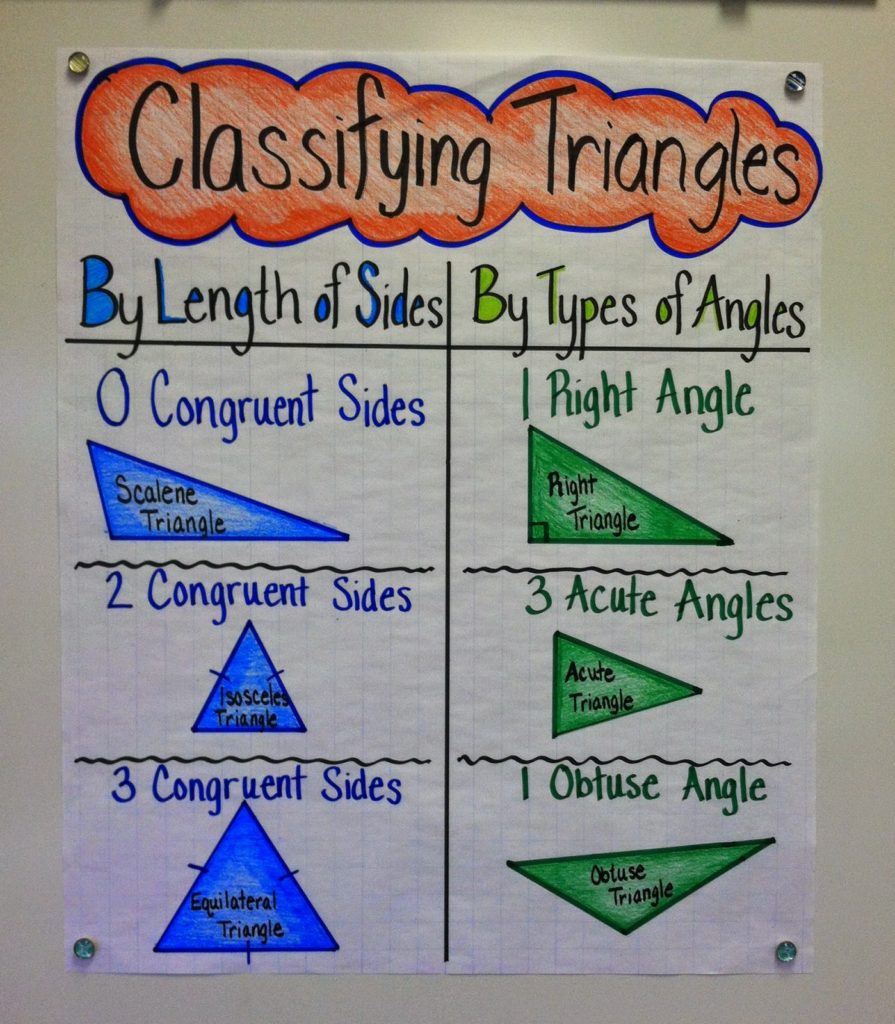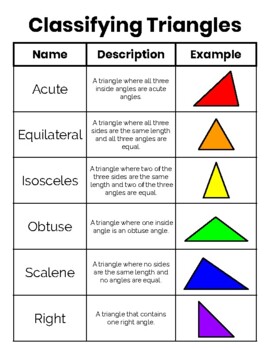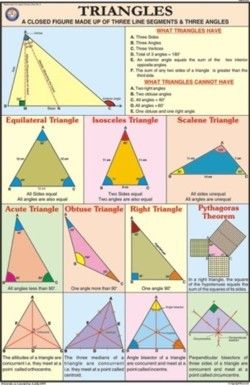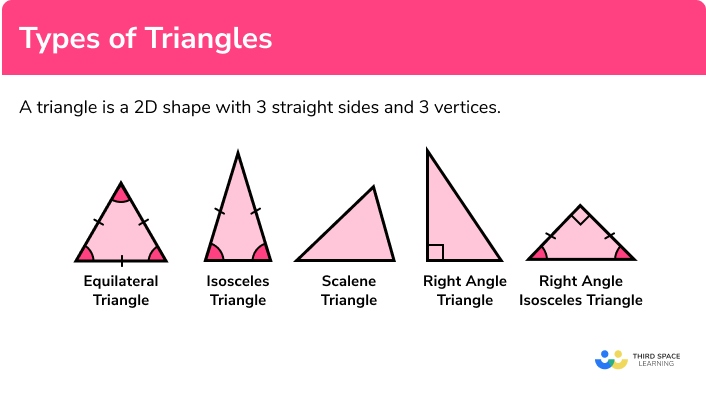Types Of Triangles Chart
1 right angle Obtuse Triangle.
Types of triangles chart. These chart patterns often occur on charts and can offer good risk to reward ratios. No congruent sides Isosceles Triangle. A triangle classified by its angles only can either be acute right or obtuse.
The triangle pattern is a chart pattern where price coils and is either a continuation pattern or a reversal pattern. An obtuse triangle has only one angle that is bigger than 90 degrees Obtuse angle. 3 congruent sides Classify Triangles Using Angles Acute Triangle.
There are three different types of Triangles. At least one angle of the Triangle measures 90right angle. Triangle Patterns Ascending and Descending Triangles.
We prefer to keep anchor charts simple and neat so as not to overwhelm our students and to keep them focused on essential information. An e quilateral triangle has all the sides and a ngles of equal measurement. All sides are equal Isosceles Triangle.
You have a contracting triangle on the chart when the tops and the bottoms of the price action are moving toward each other. Ascending Triangle flat tops. This type of triangle is also called an acute triangle as all its sides measure 60 in measurement.
In technical analysis we can distinguish three types of triangle patterns. The basic Forex triangles are. Two Teachers With Style.
There are 3 triangles ascending descending symmetrical that traders should learn. Ascending triangles can be defined as price action formations where we have a horizontal top and an up-sloping bottom. You also have triangles called acute- equilateral triangle acute- isosceles triangle acute- scalene triangles right- scalene triangle right- isosceles triangle obtuse- scalene triangle and obtuse- isosceles triangle.
This anchor chart for classifying triangles will show your students definitions and examples of right acute obtuse equilateral isosceles and scalene triangles. Only two sides Are equal length Scalene Triangle. 4 rows The different types of Triangles.
We prefer to keep anchor charts simple and neat so as not to overwhelm our students and to keep them focused on essential information. The charts below show how to classify a triangle by its angles and sides. It is a great reference tool for them to remember the difference between acute right and obtuse triangles.
Two Teachers With Style. Descending Triangle flat bottoms. Ascending Triangles Ascending triangles are bullish continuation patterns that form when the upper trend line is flat or horizontal while the lower trend line continues to rise diagonally.
3 acute angles Right Triangle. No sides are equal Classified by Angles Right Triangle. Wedges sides increasedecrease in the same direction.
An isosceles triangle is the one with two. Basically there are three types of triangle patterns-Symmetrical Triangle Pattern. This anchor chart for classifying triangles will show your students definitions and examples of right acute obtuse equilateral isosceles and scalene triangles.
At least 2 congruent sides Equilateral Triangle. Measurement of sides and angles triangles are of following types. Symmetrical triangles have descending highs and ascending lows such that both the upper and lower.
Symmetrical Triangle Pattern-Symmetrical Triangle Pattern is formed when there is indecisiveness in the market. Types of Triangles Anchor Chart - This mini anchor chart is the perfect size to fit in your students interactive math journals. A right triangle has a 90 degrees angleThe following is a right triangle.
Types of Triangles Triangles can be classified by their angles and their sides. 3 rows Types of Triangles Based on Angles. There are three types of triangle patterns.
Classified by Sides Equilateral Triangle. Ascending and descending triangle patterns are right-angle triangles in that the.



















/UnderstandingTriangle2-0651c3c900b3422cadc70d83555a5072.png)